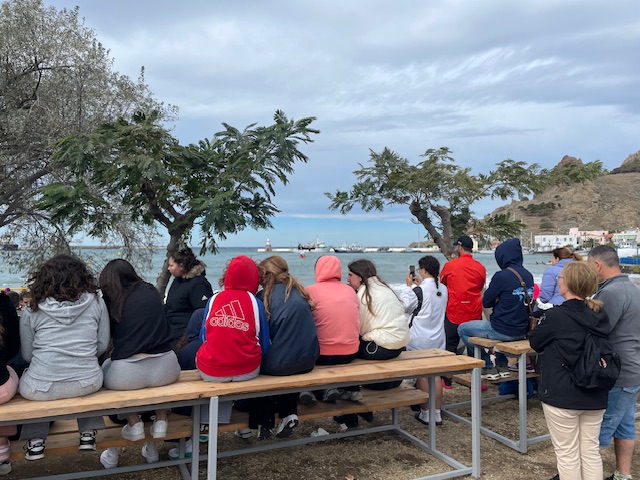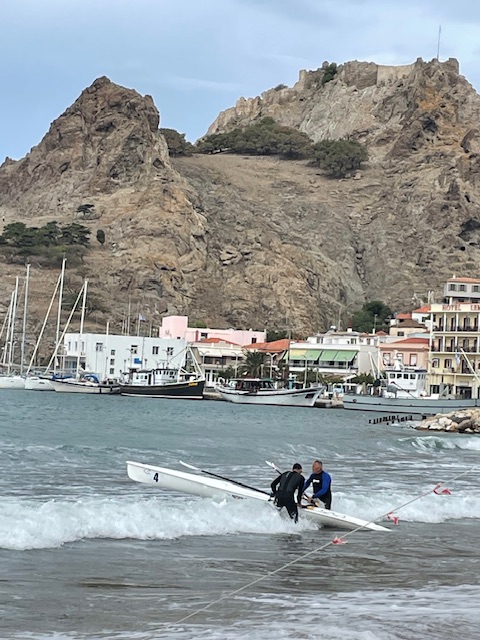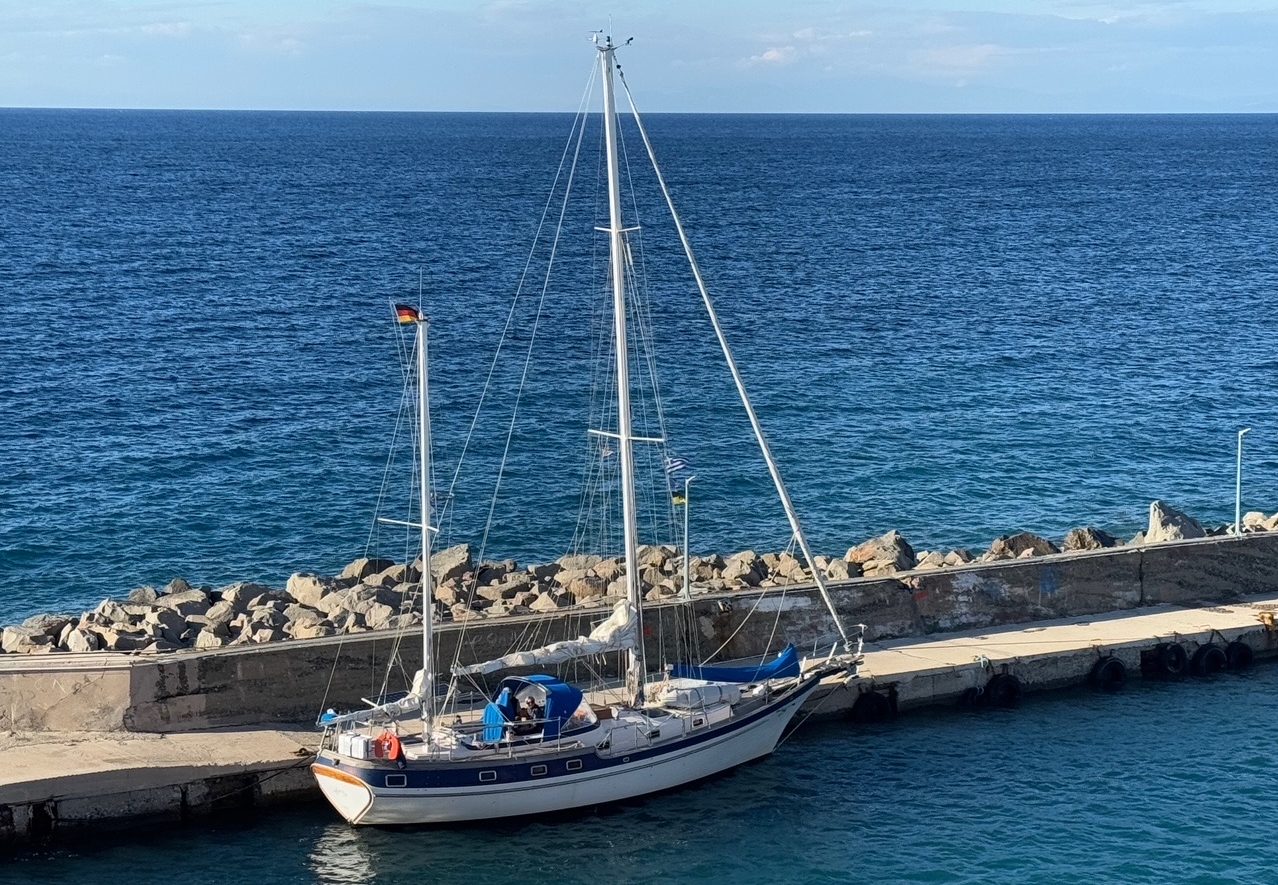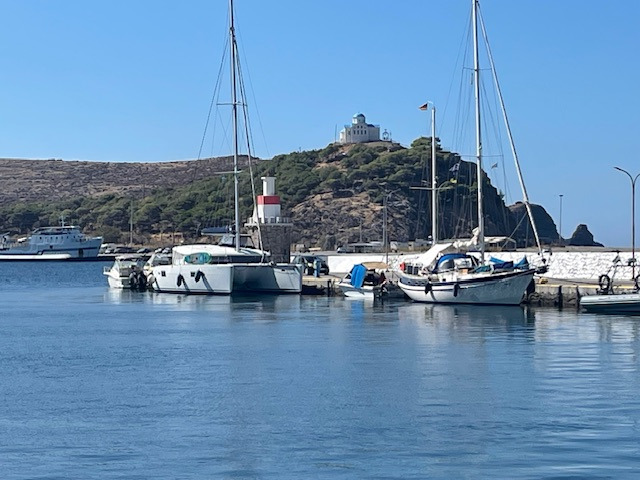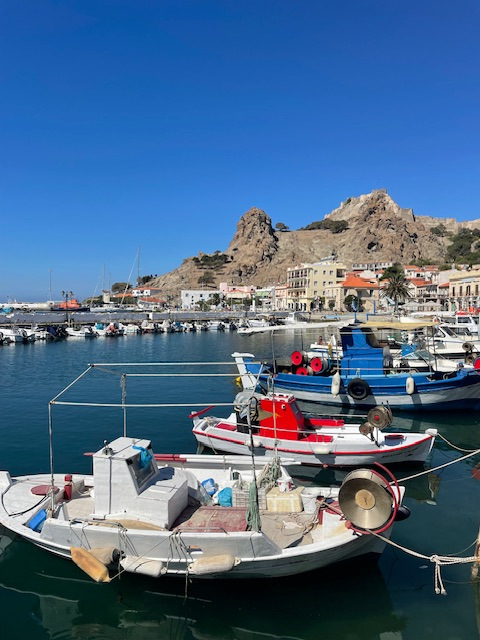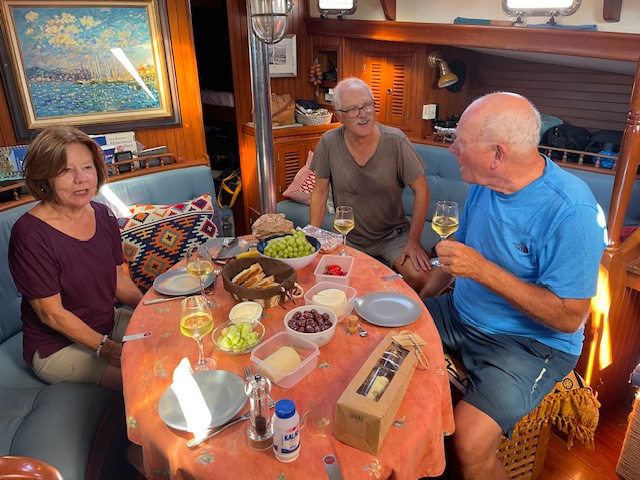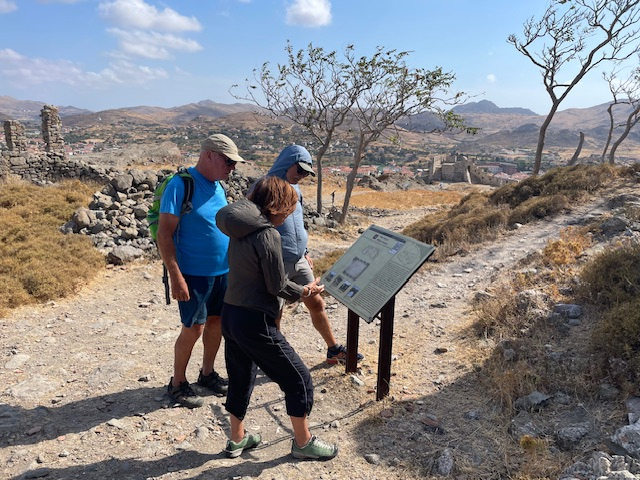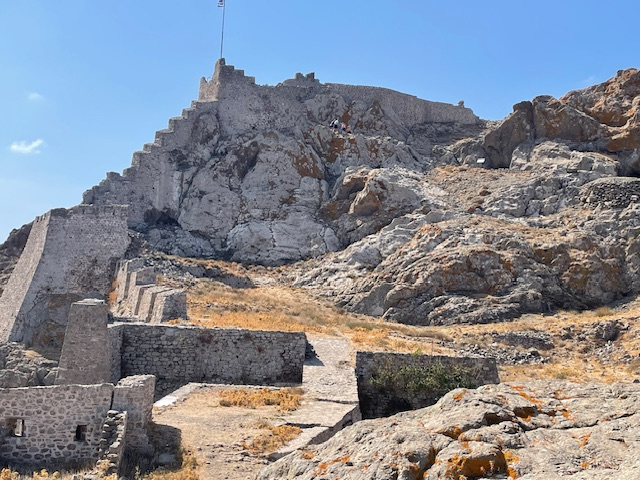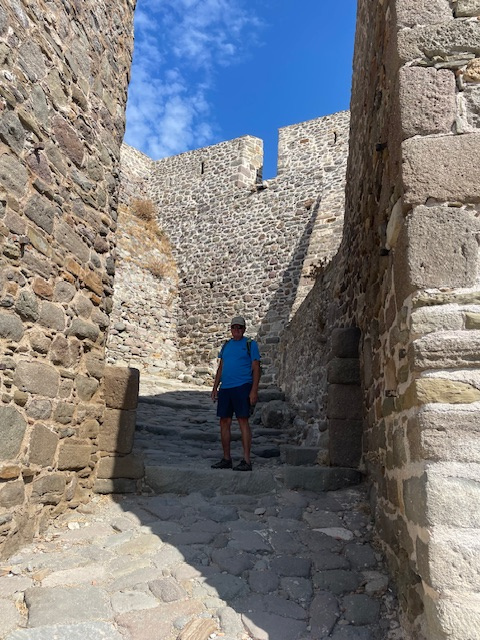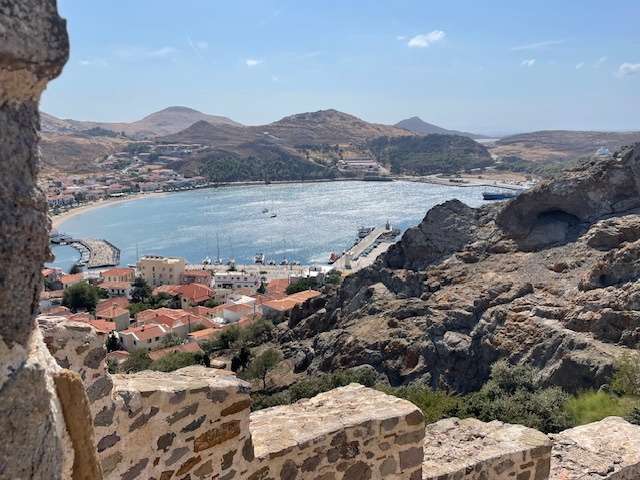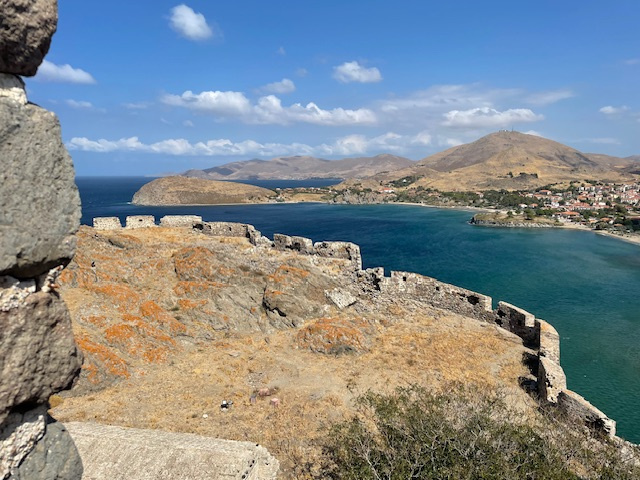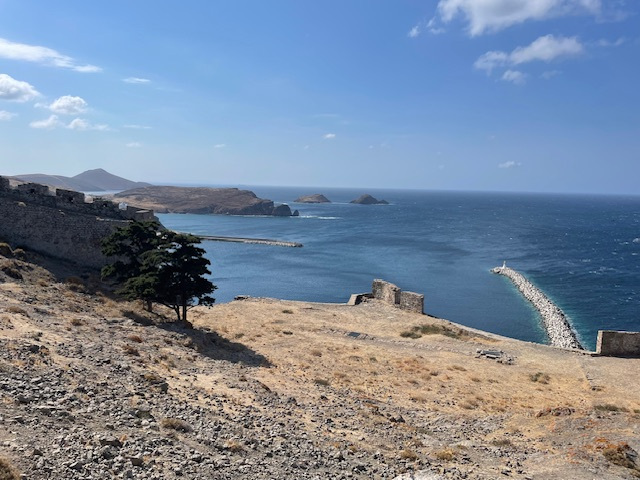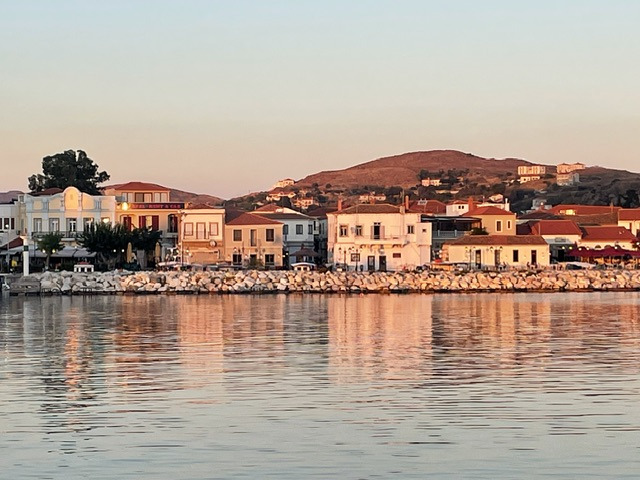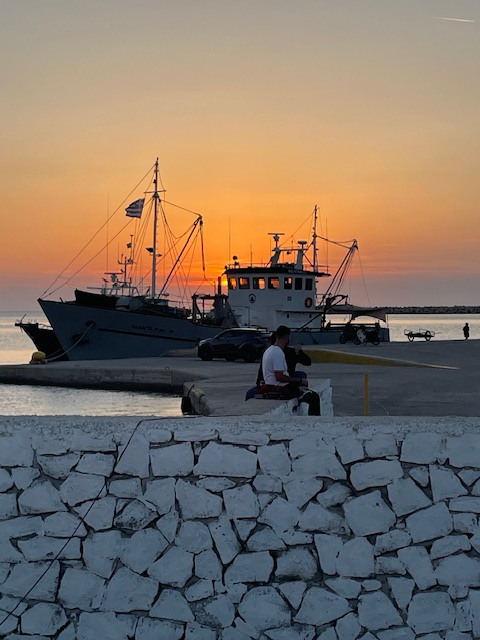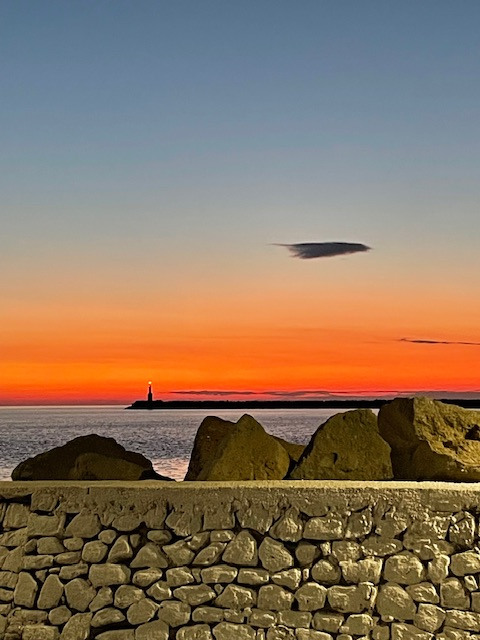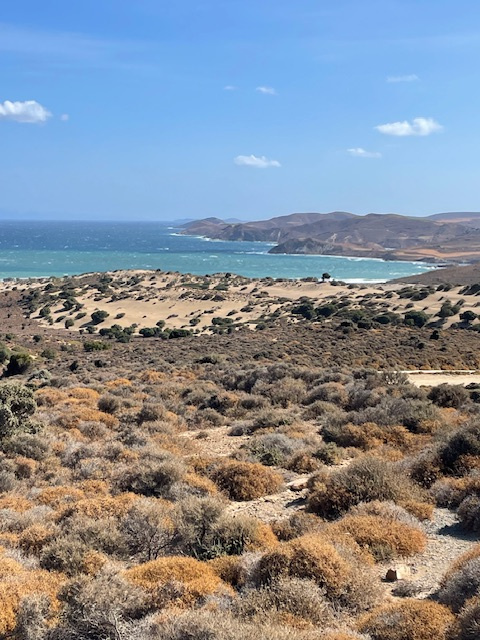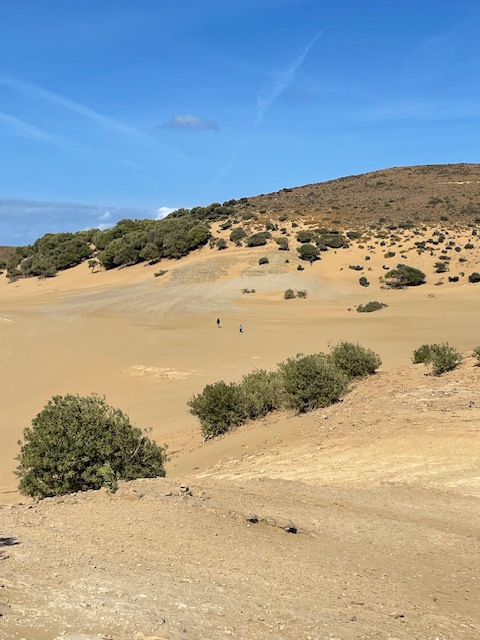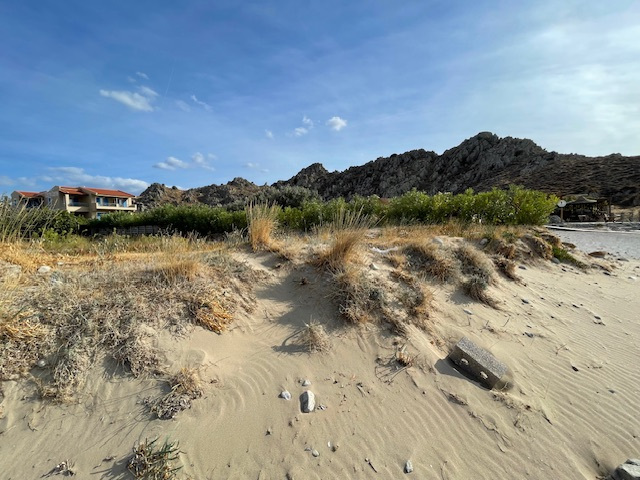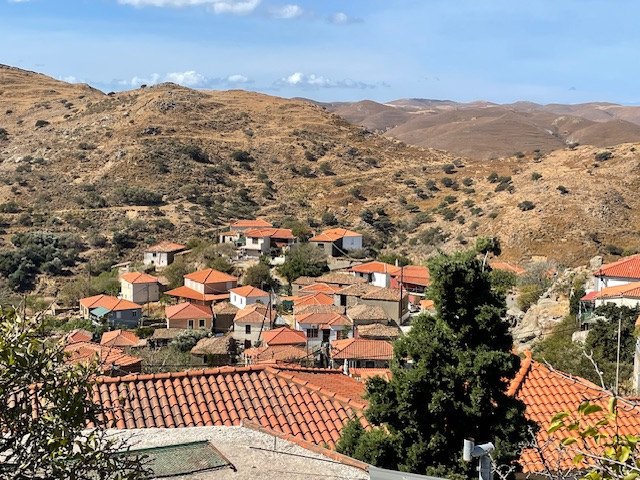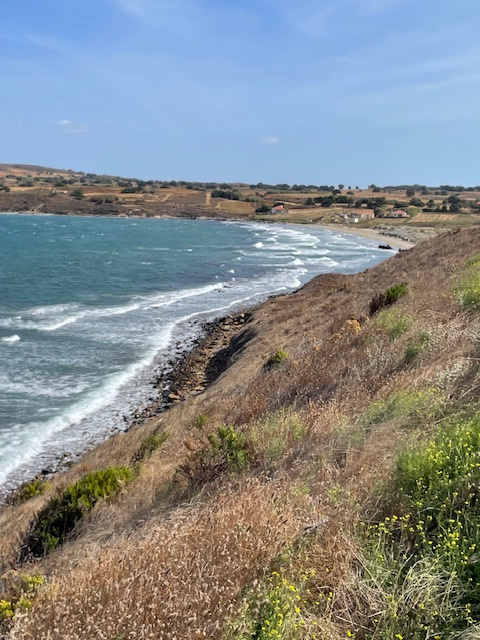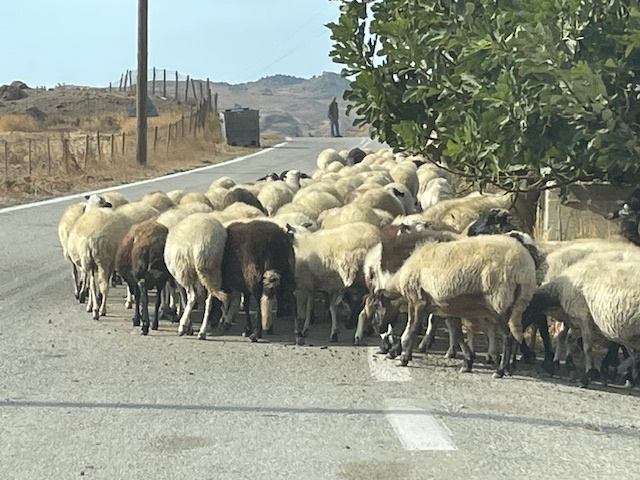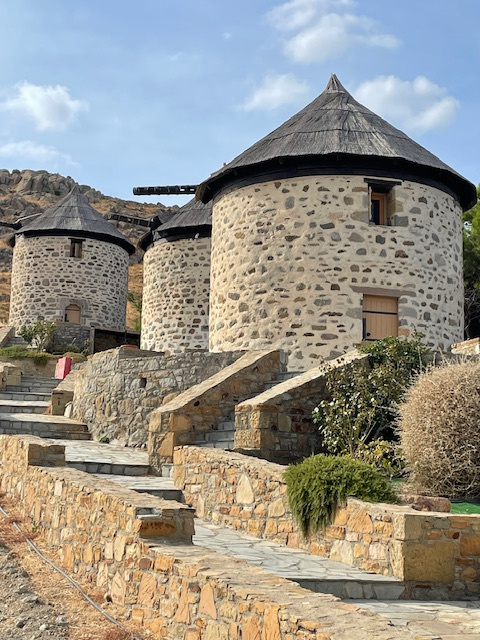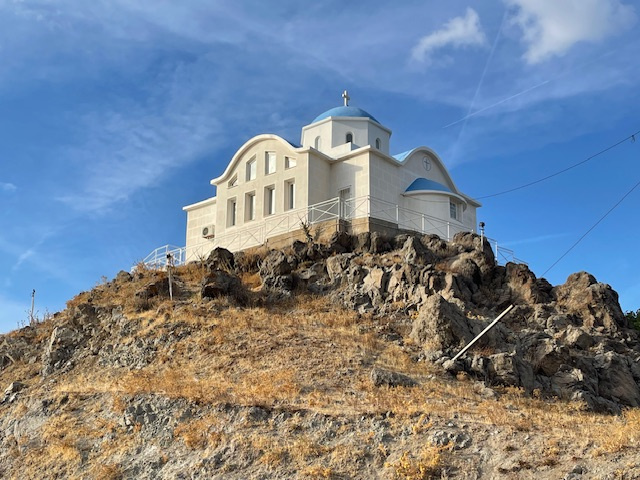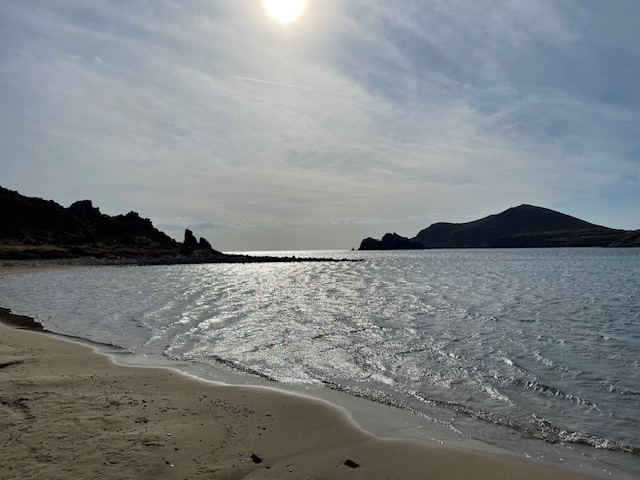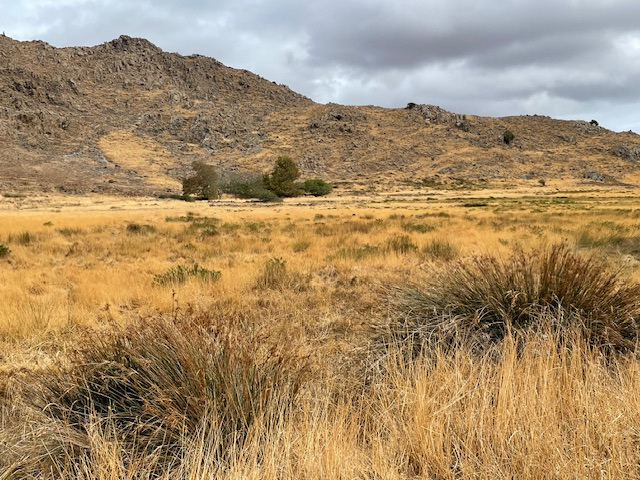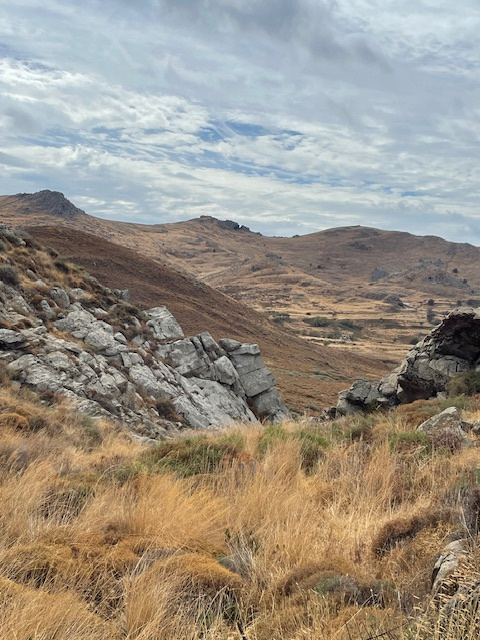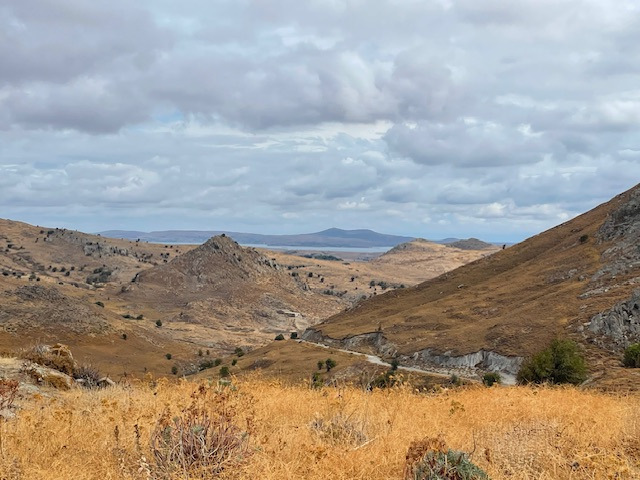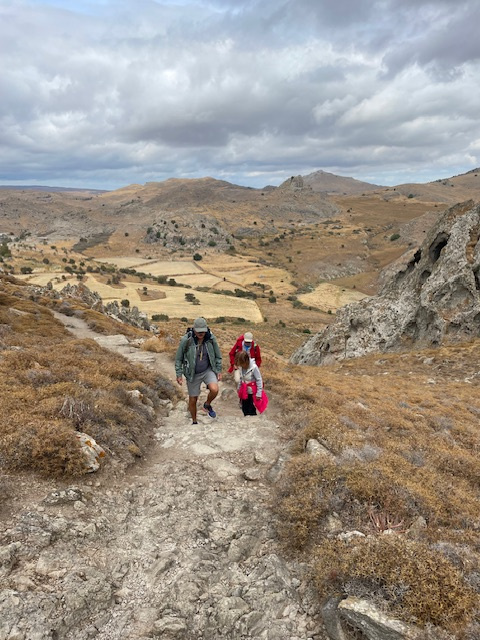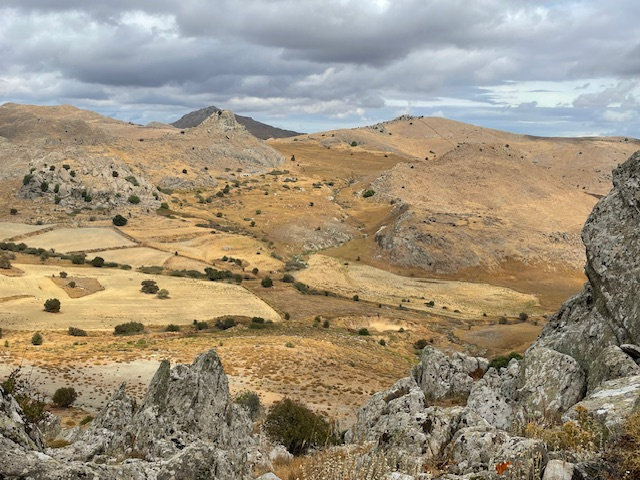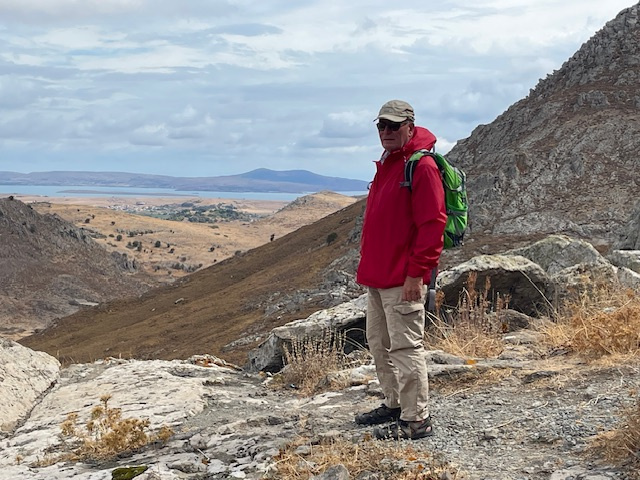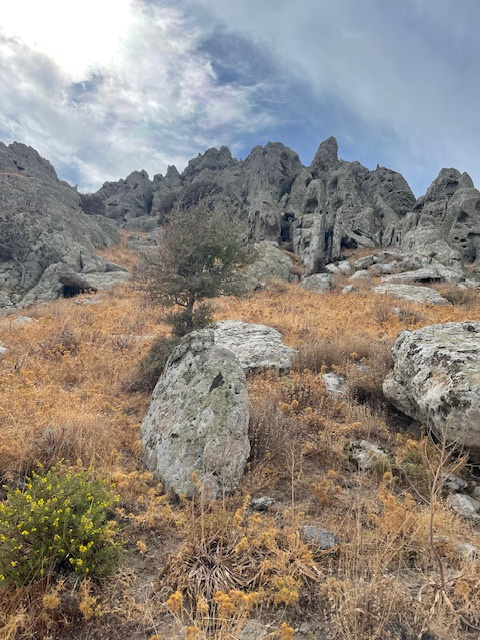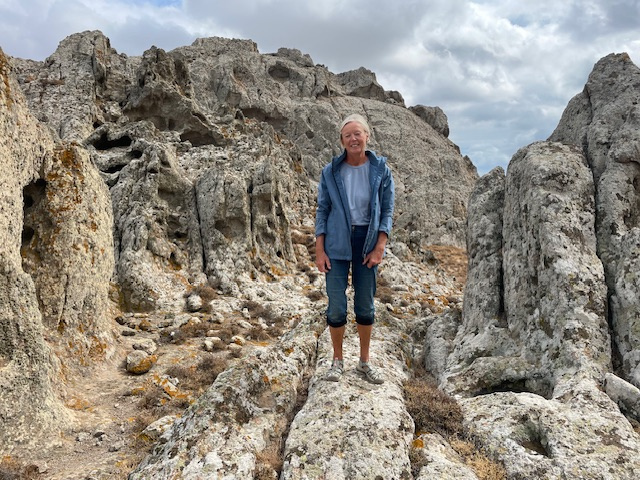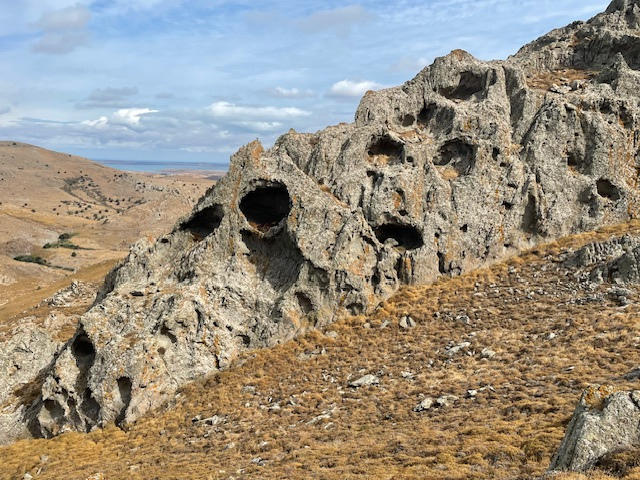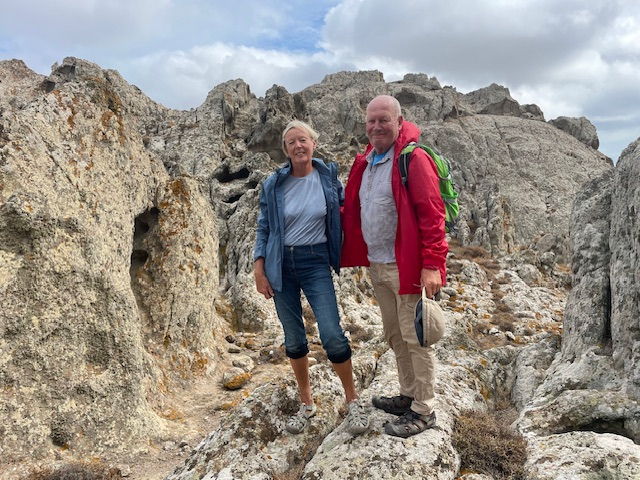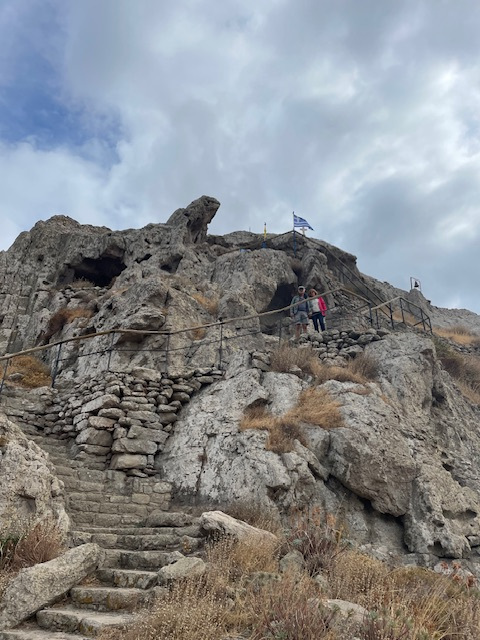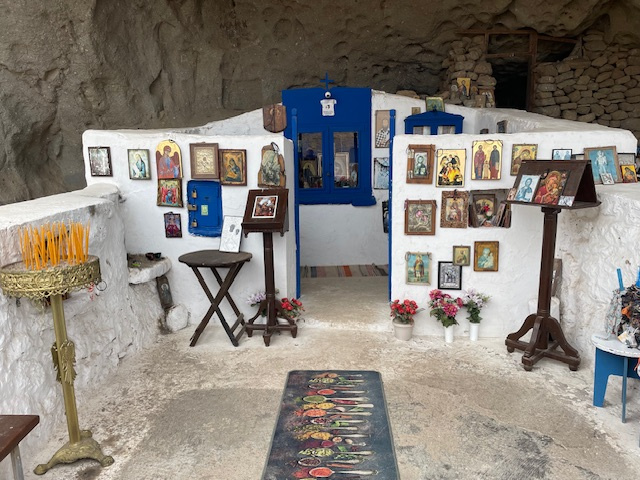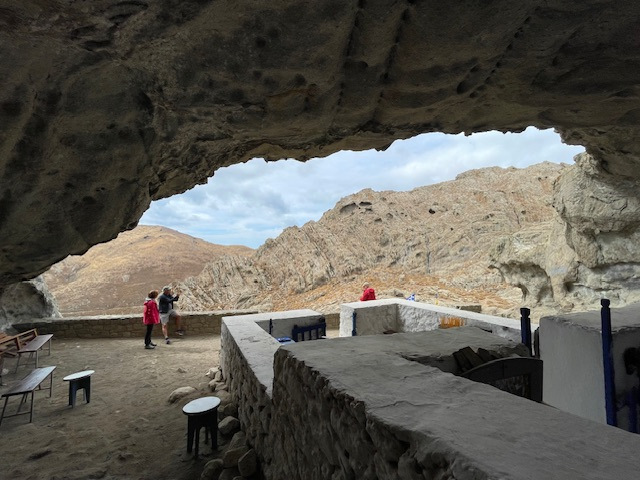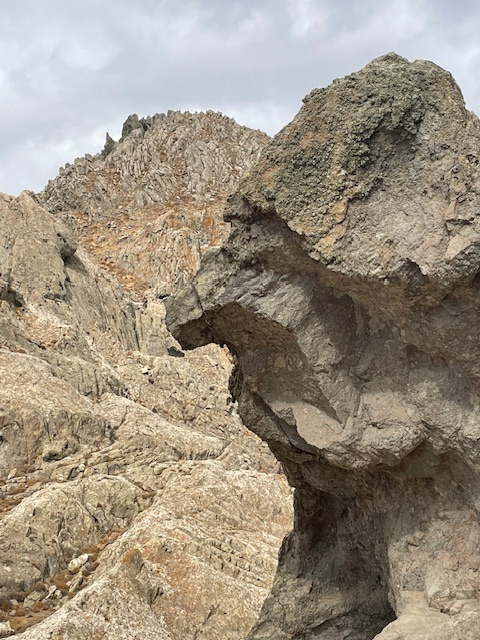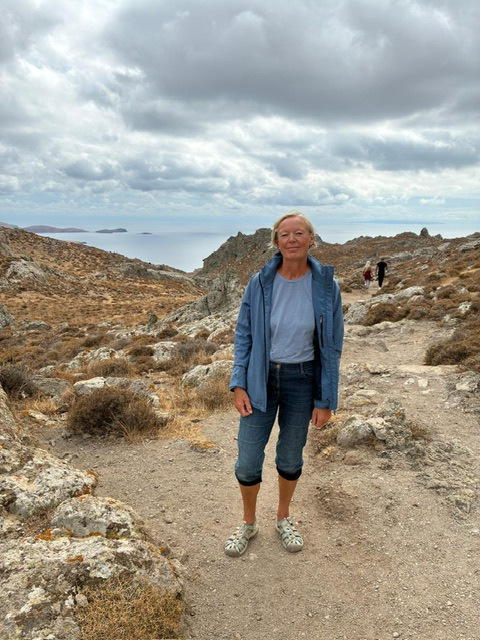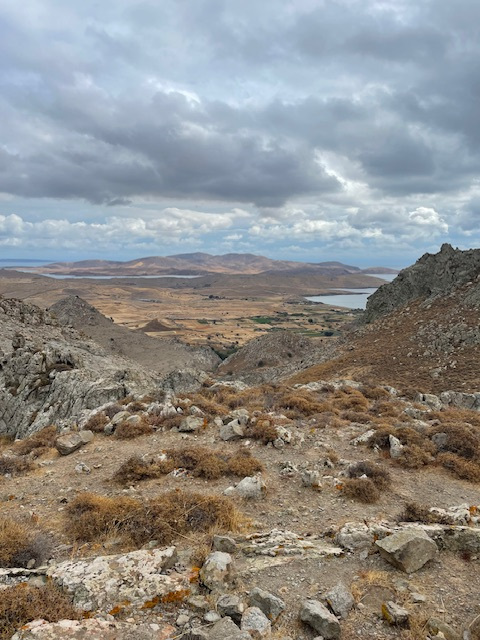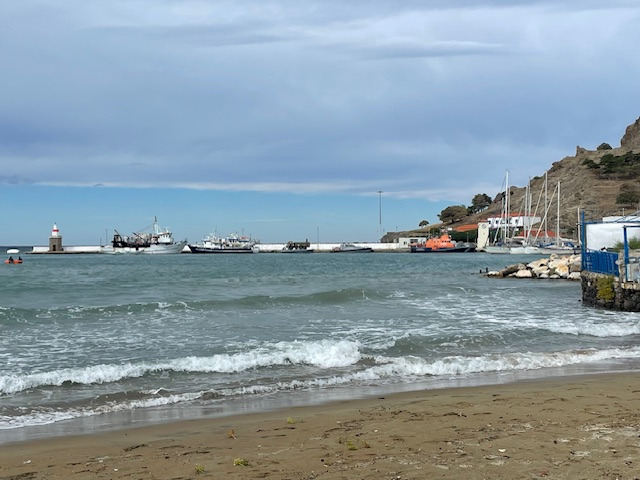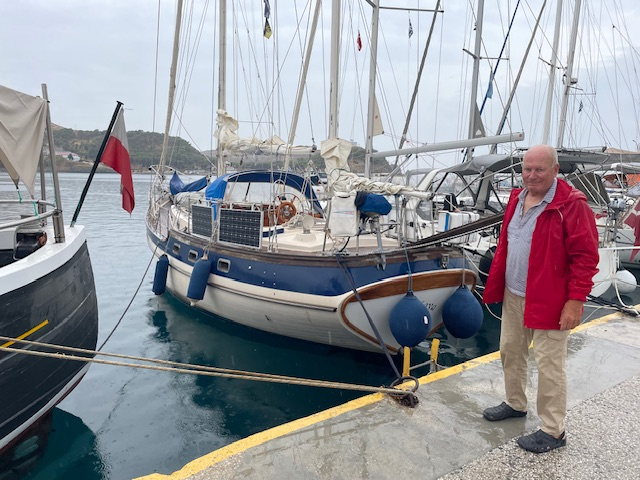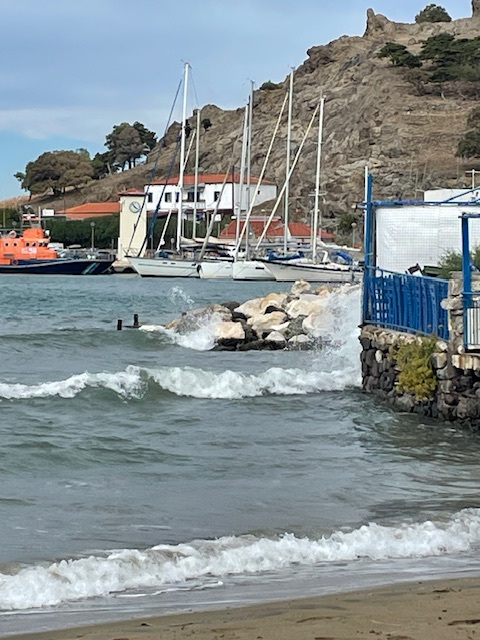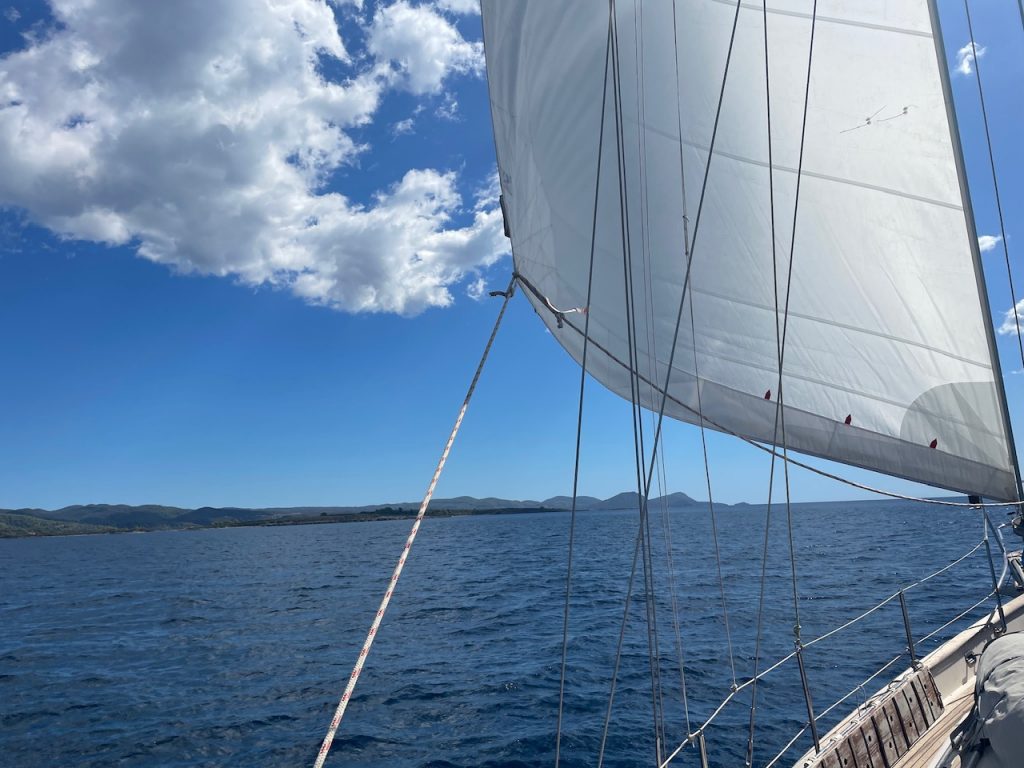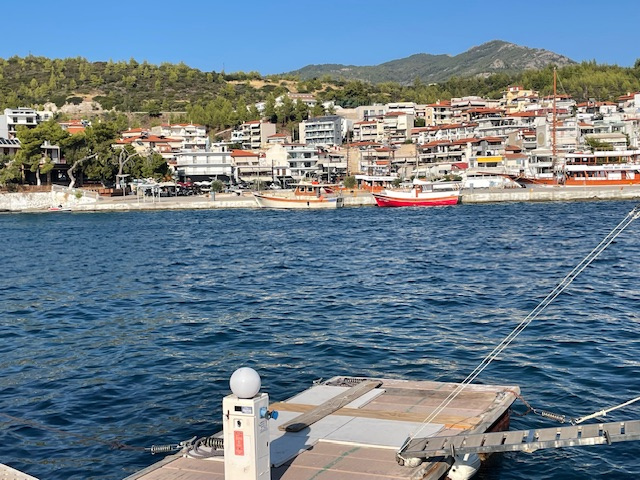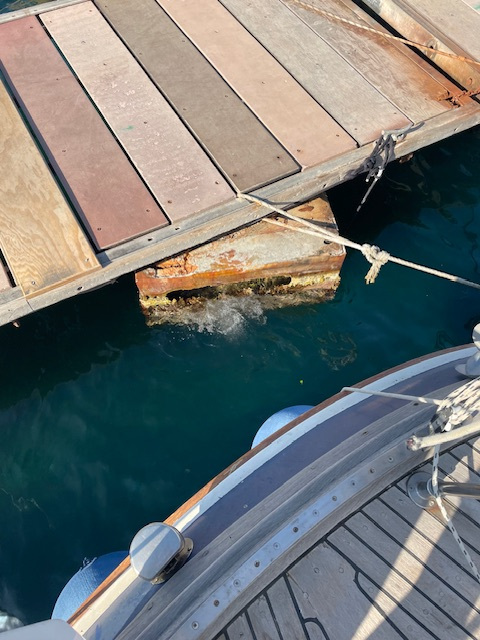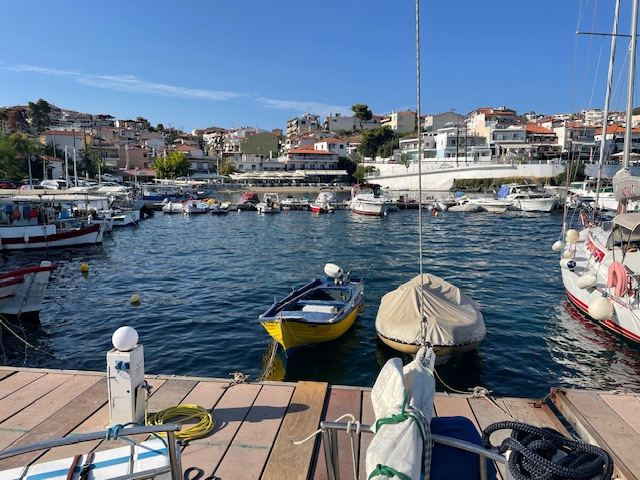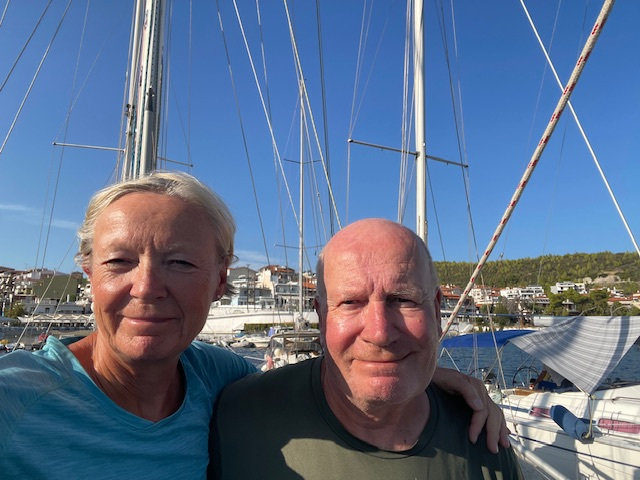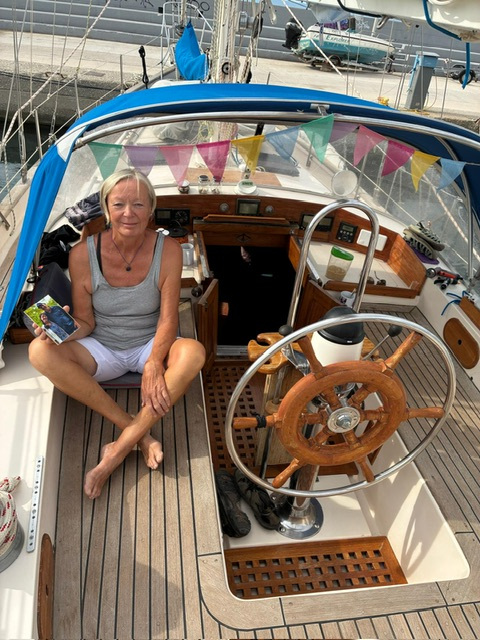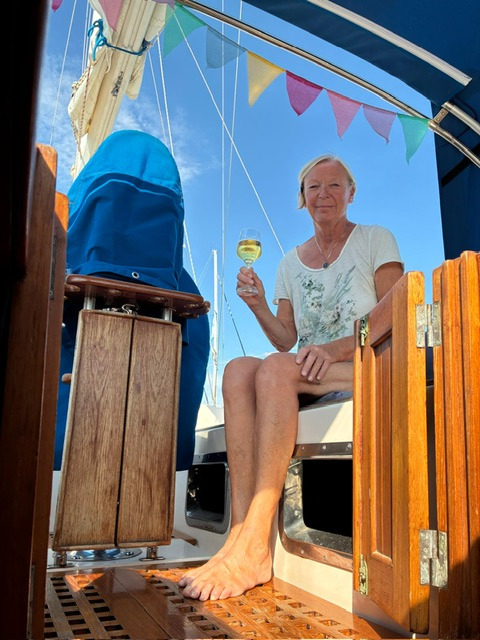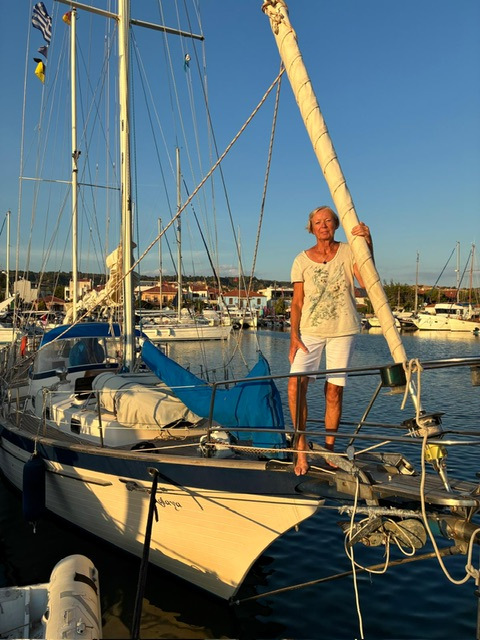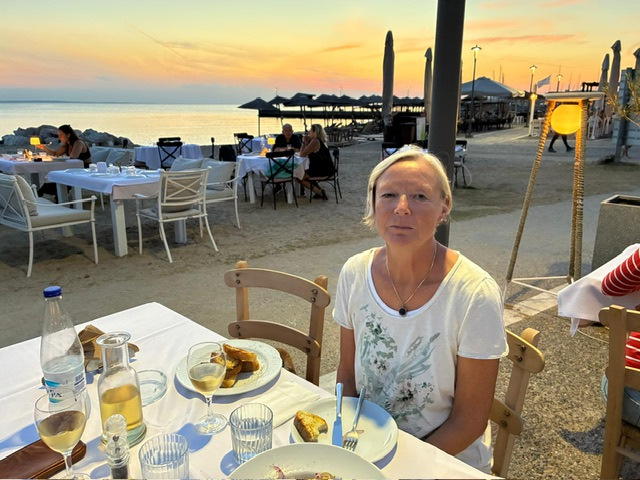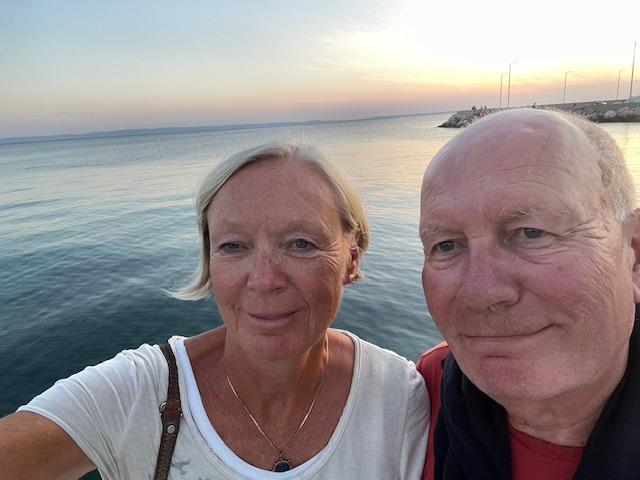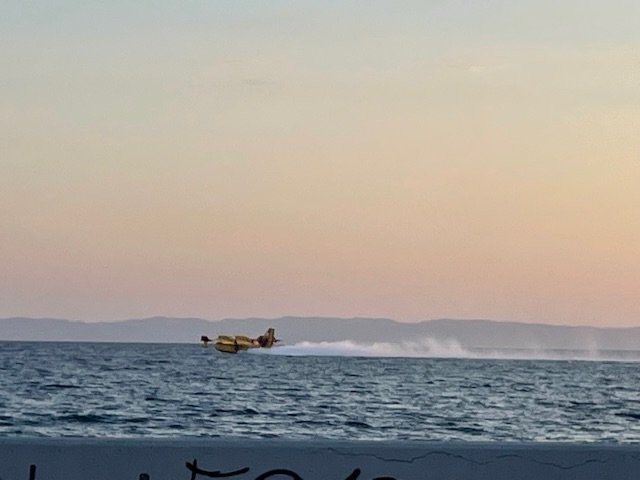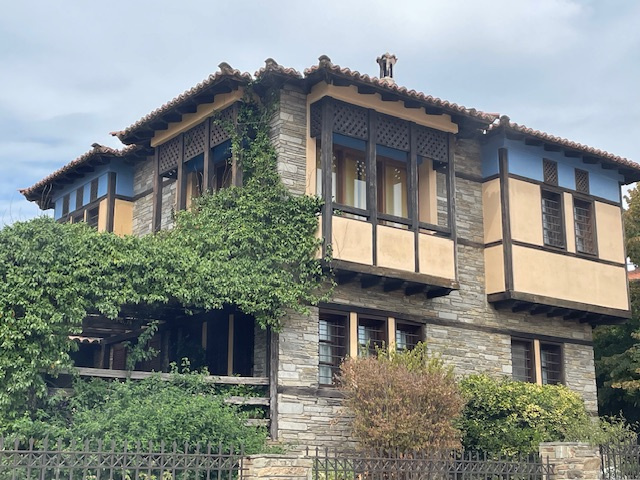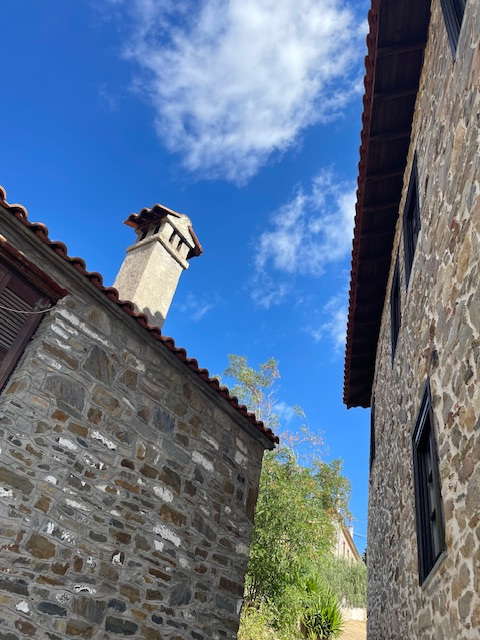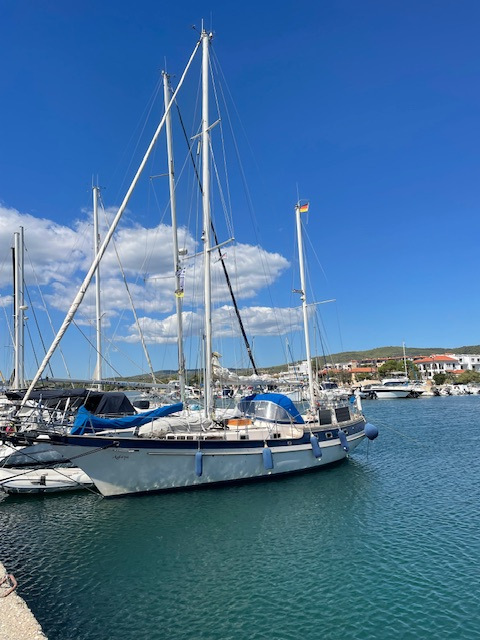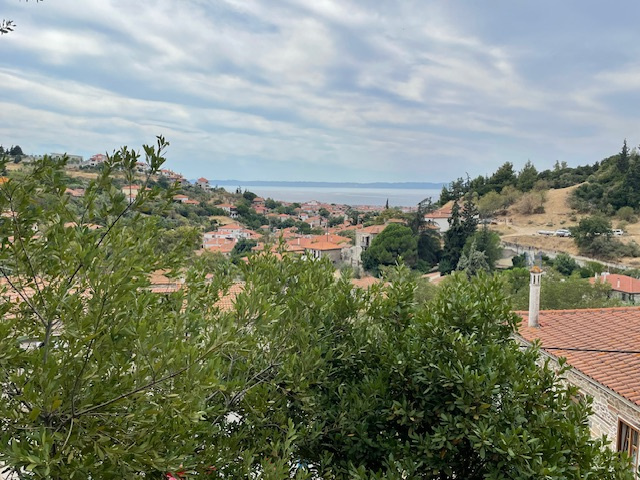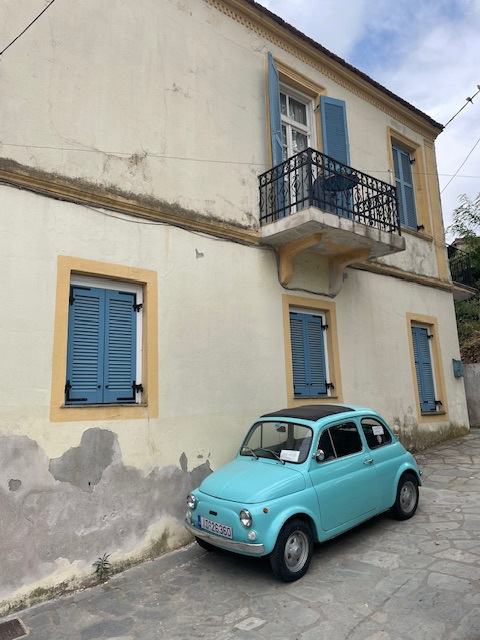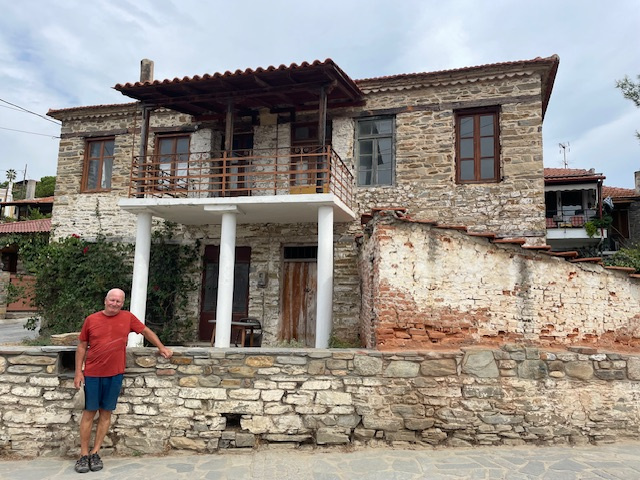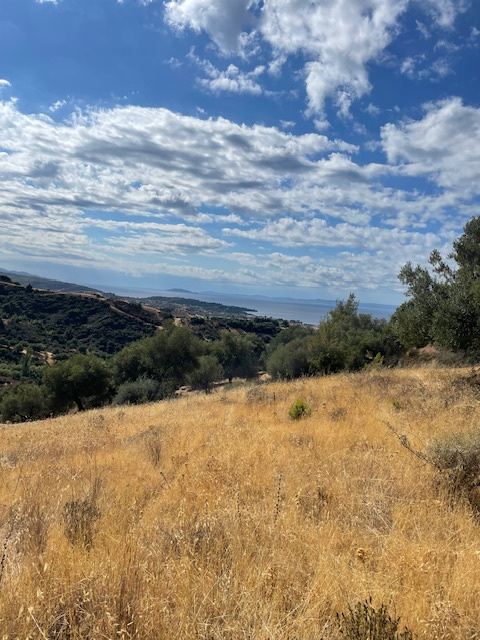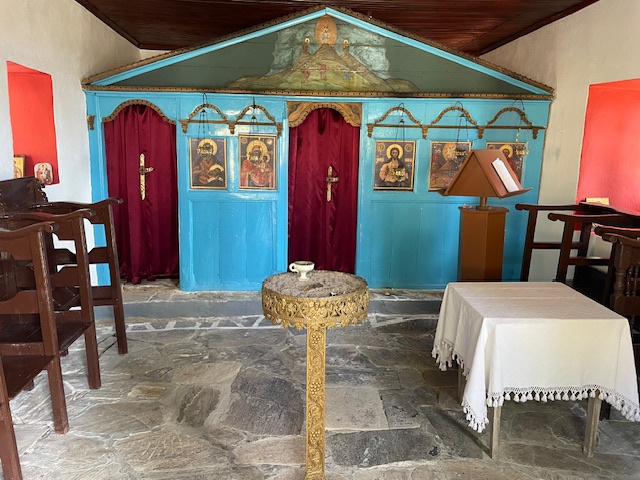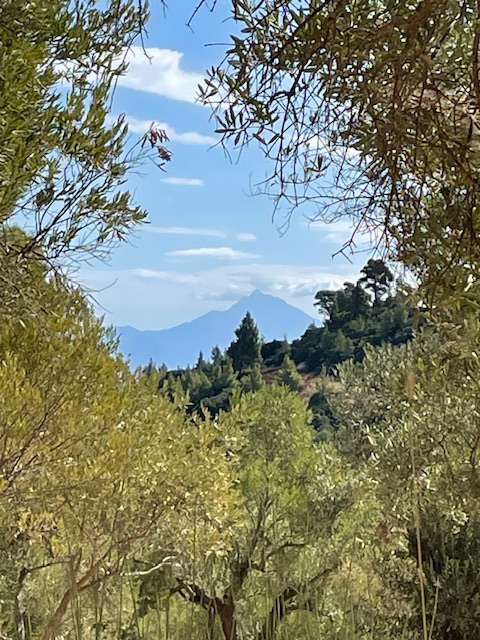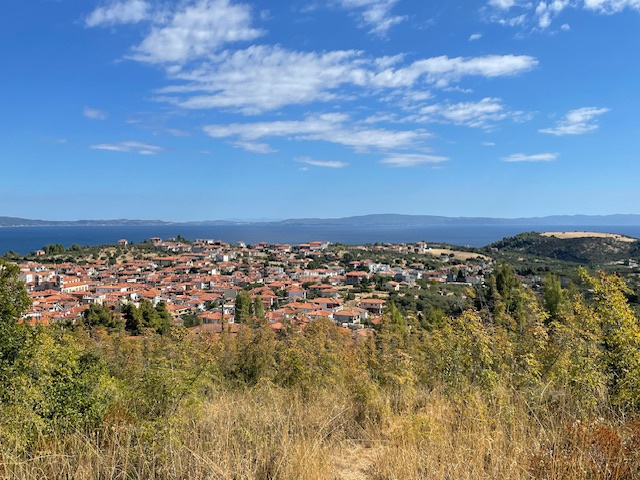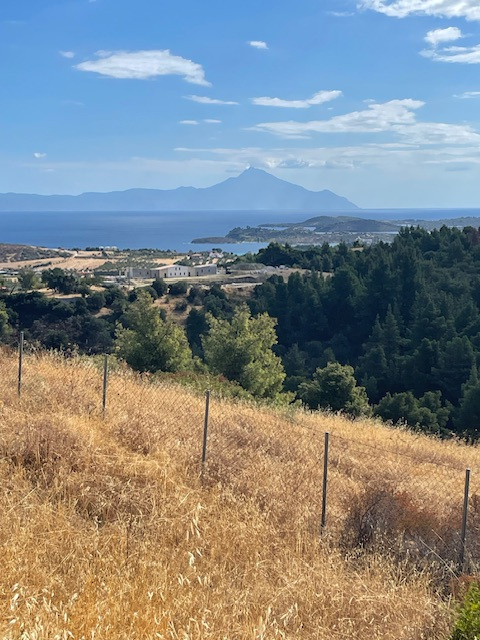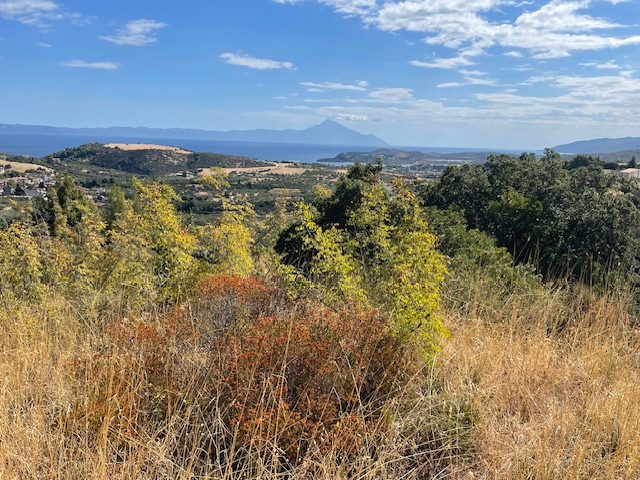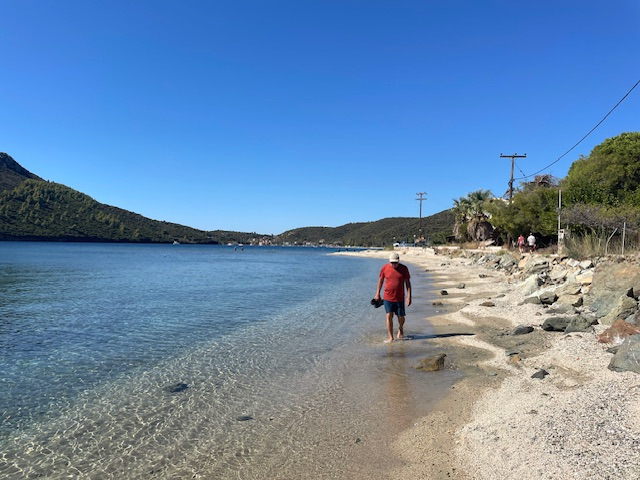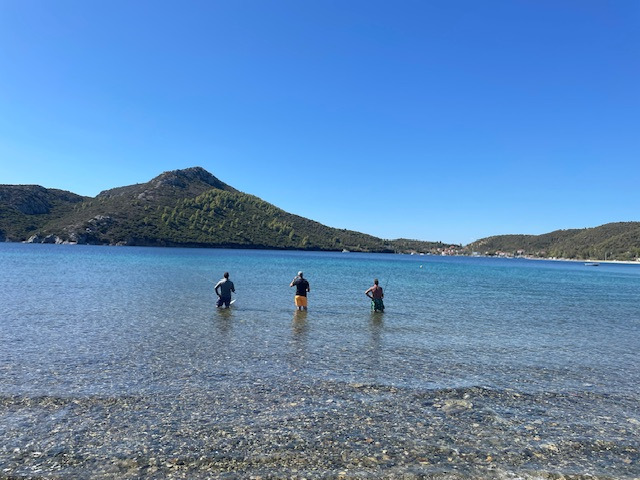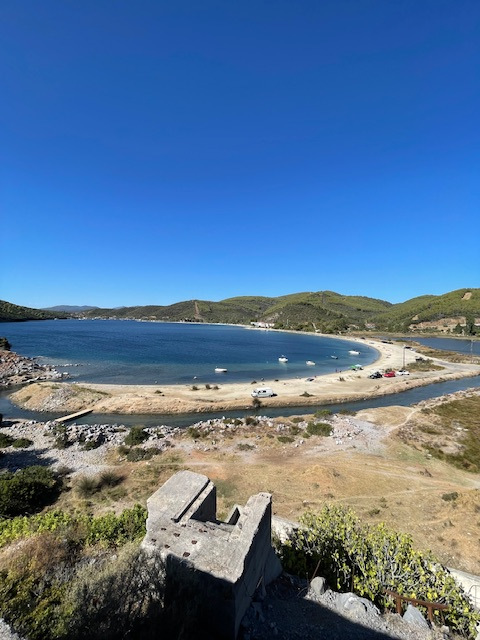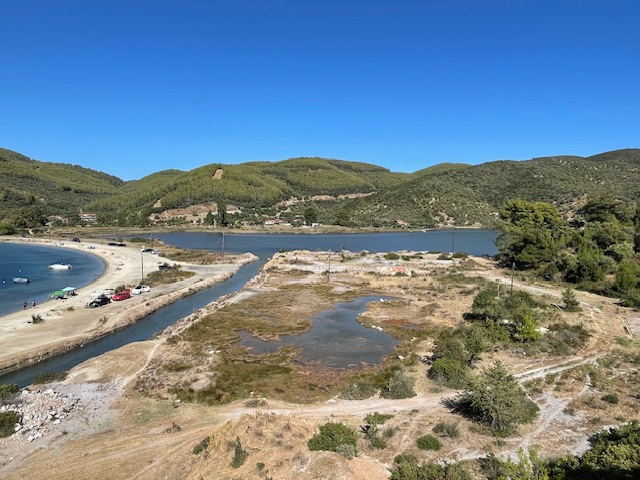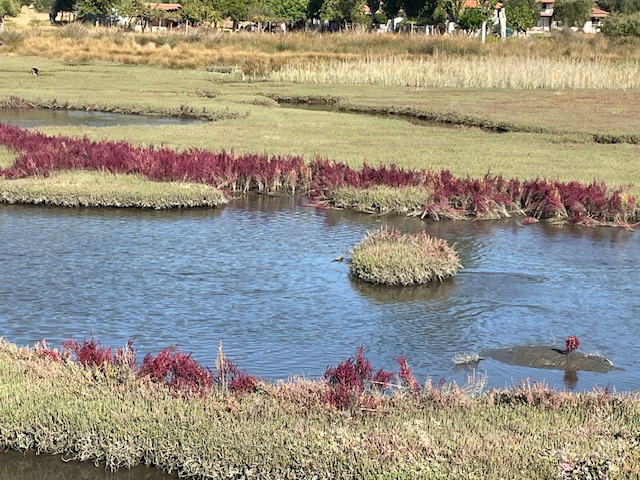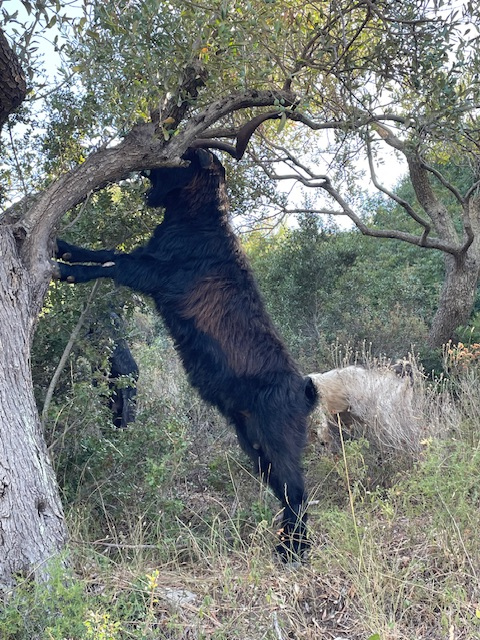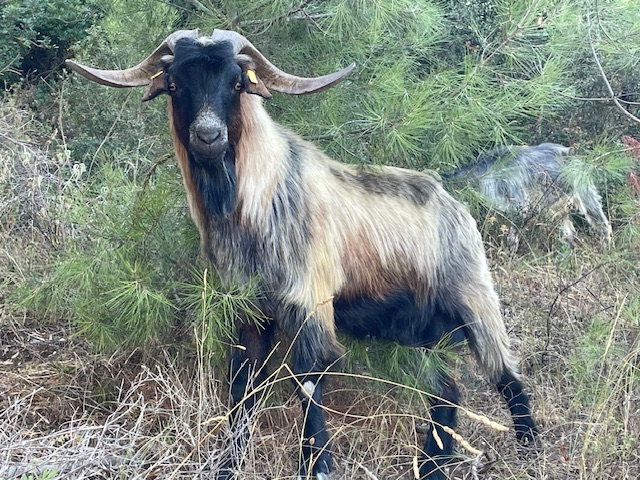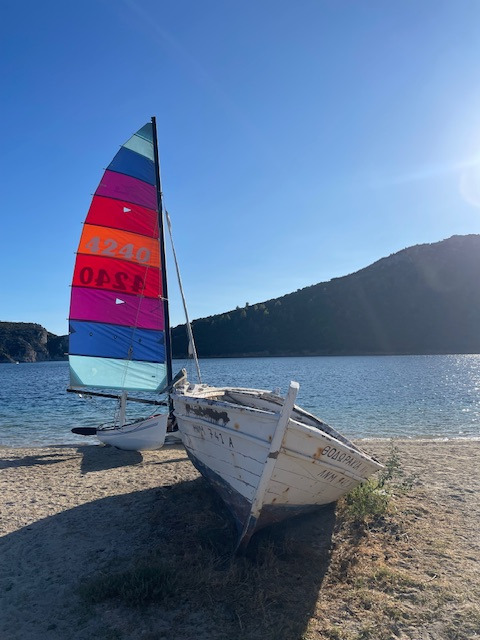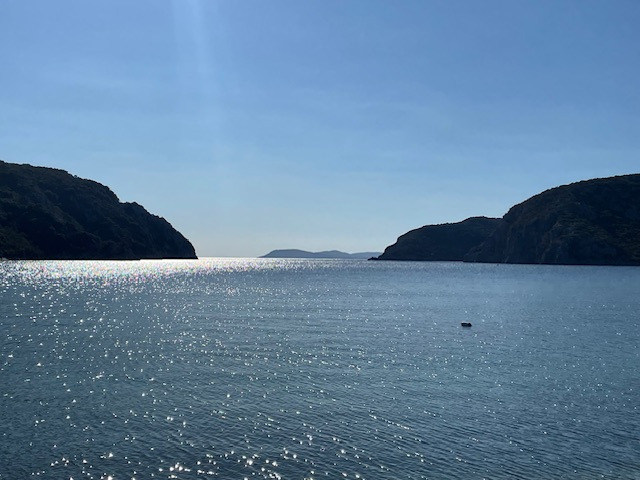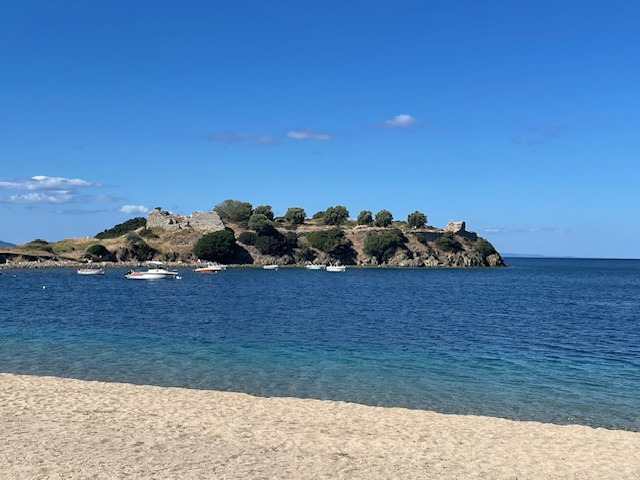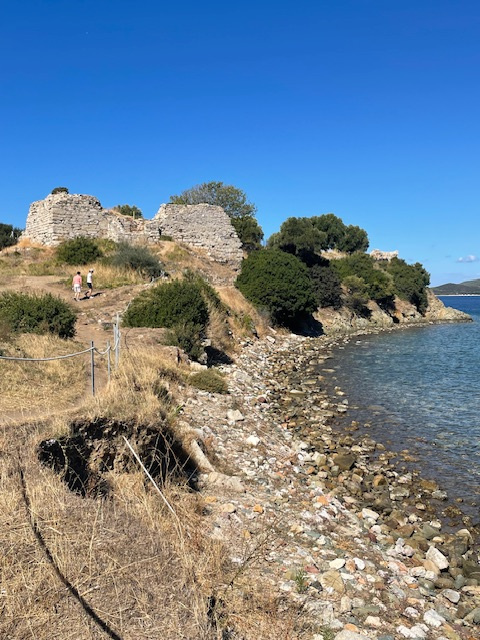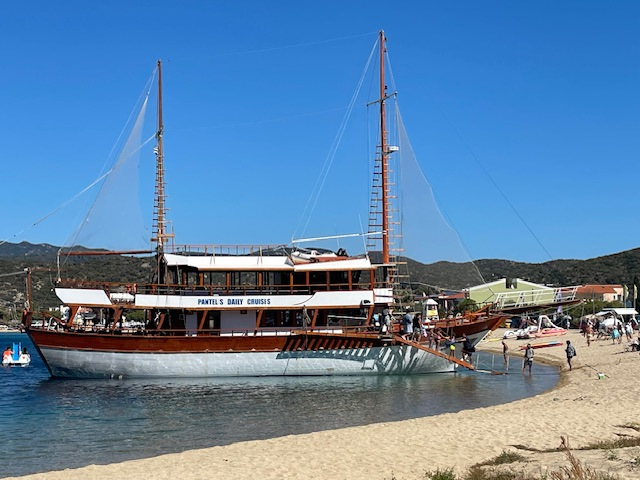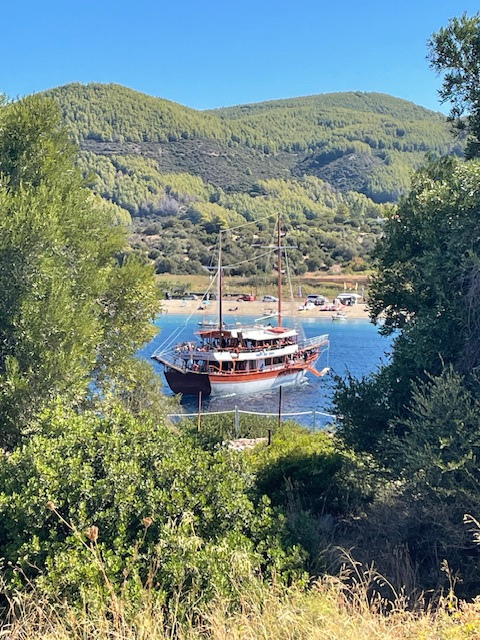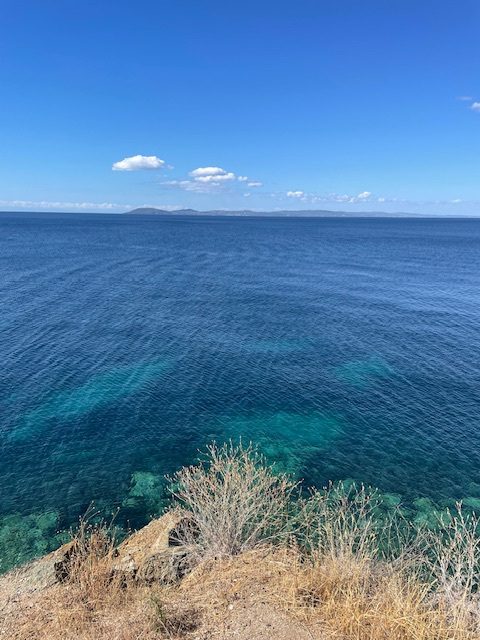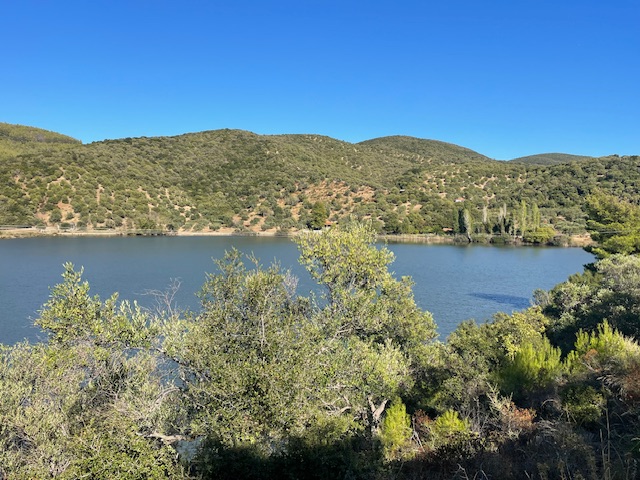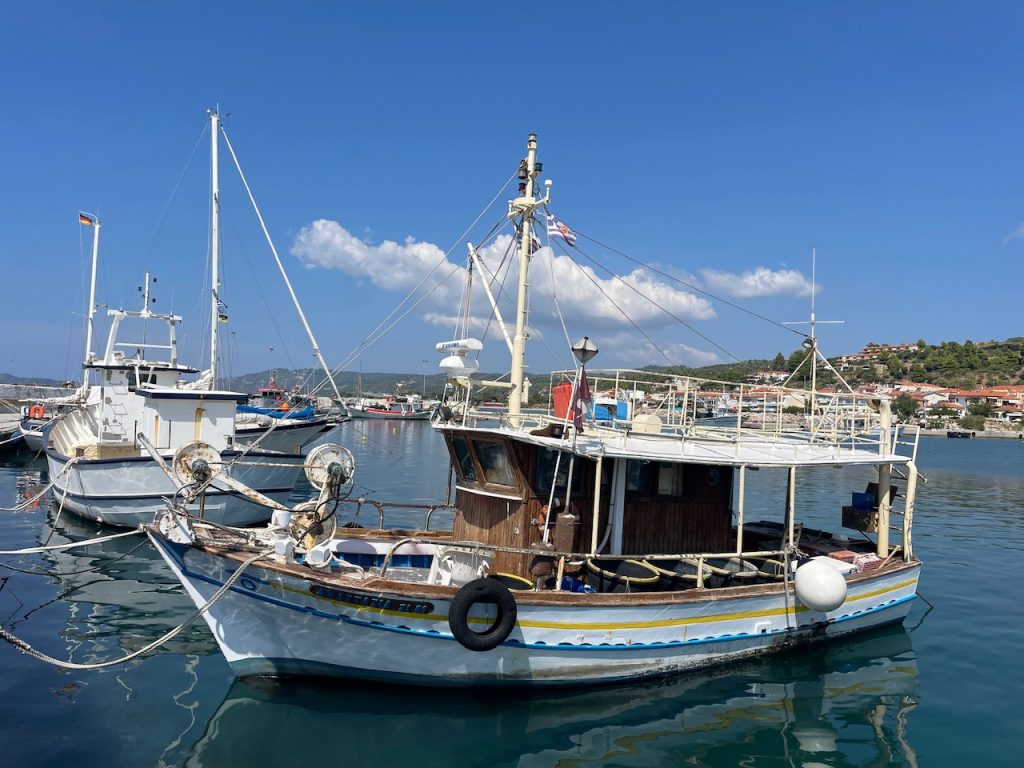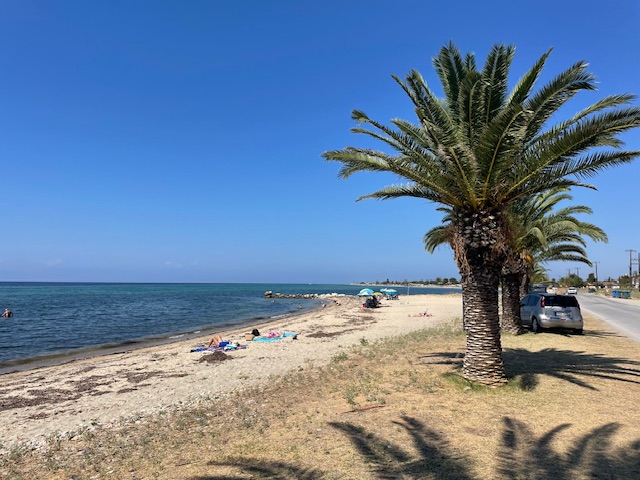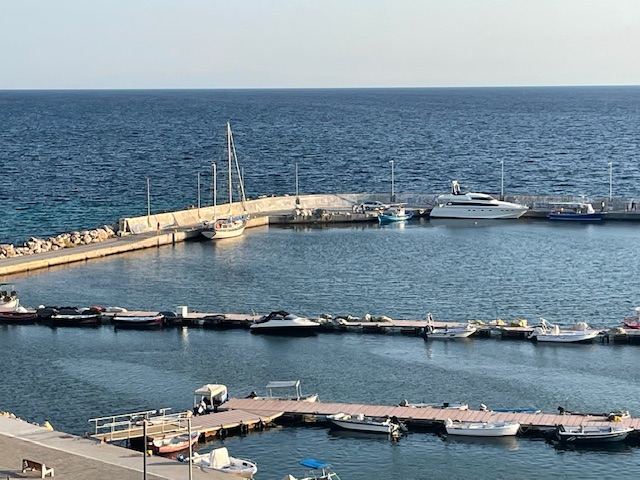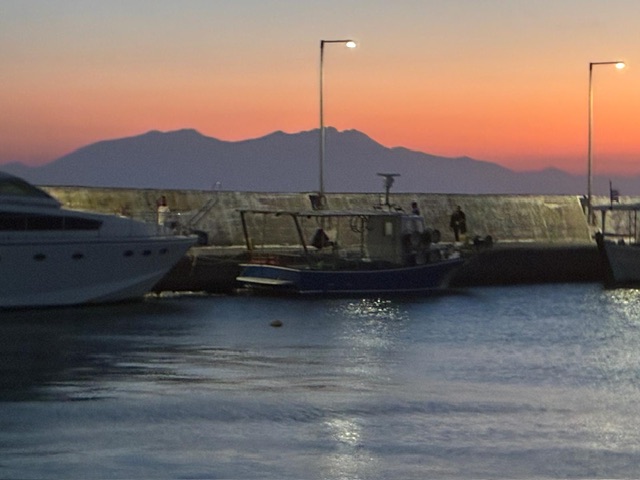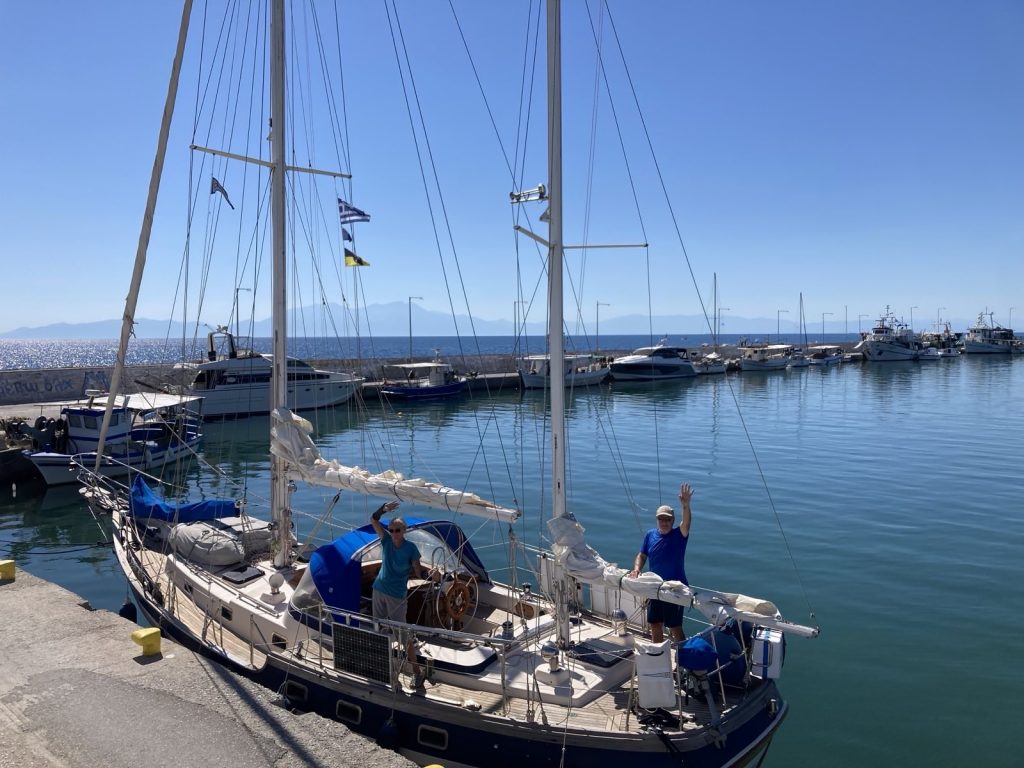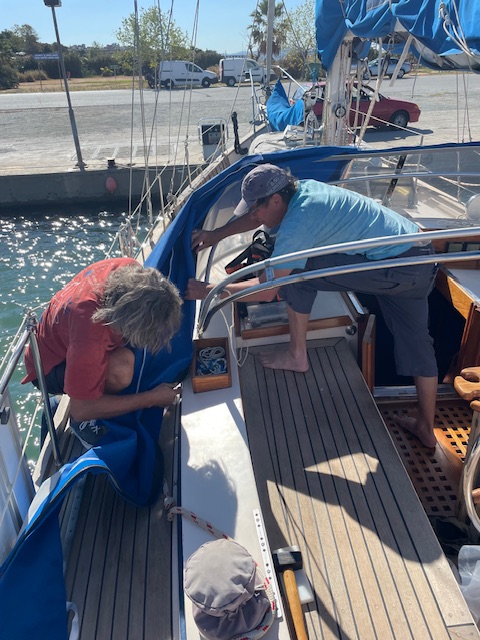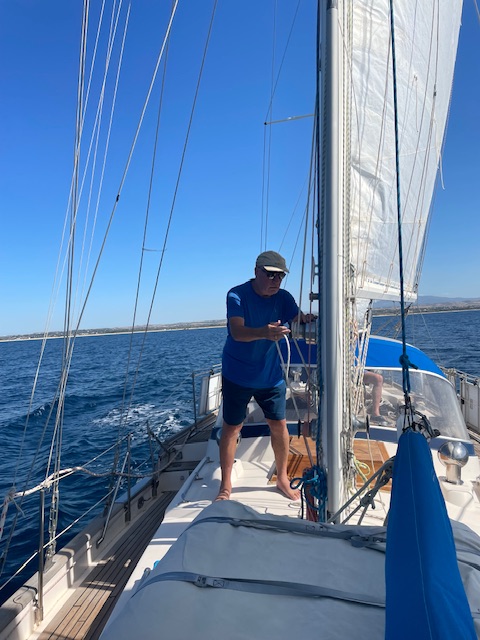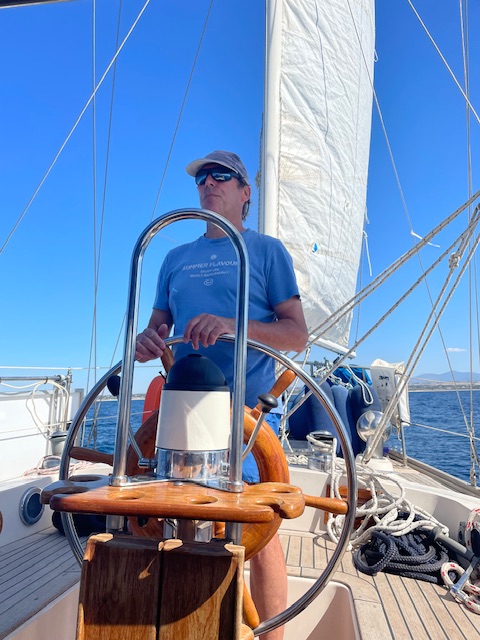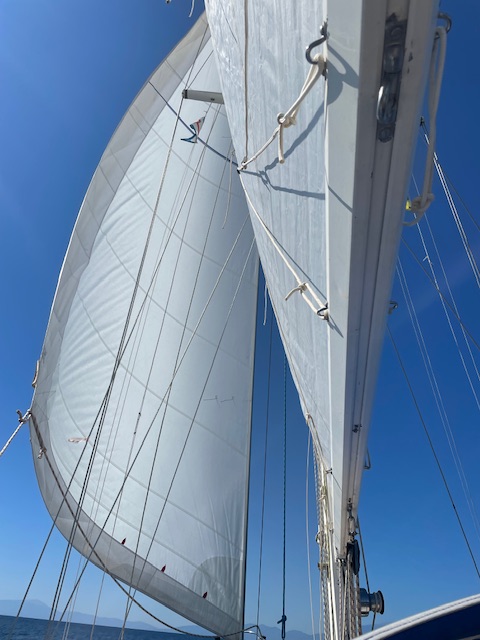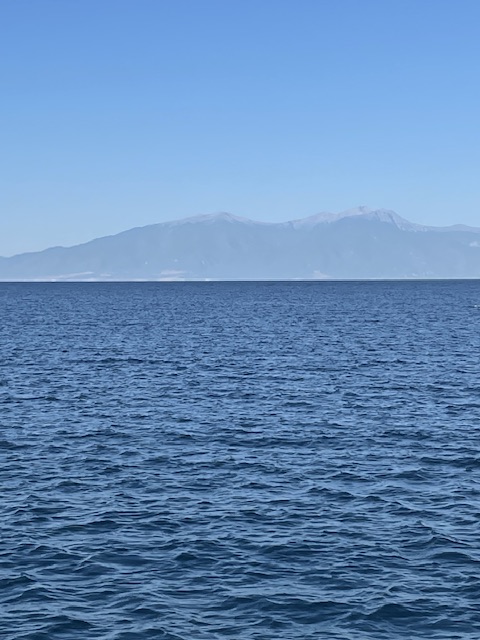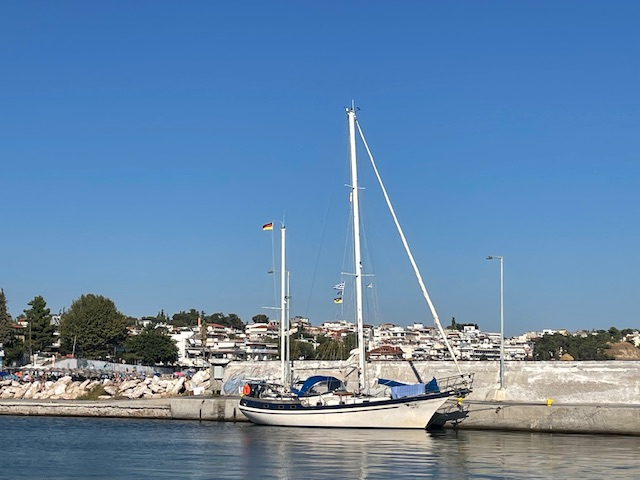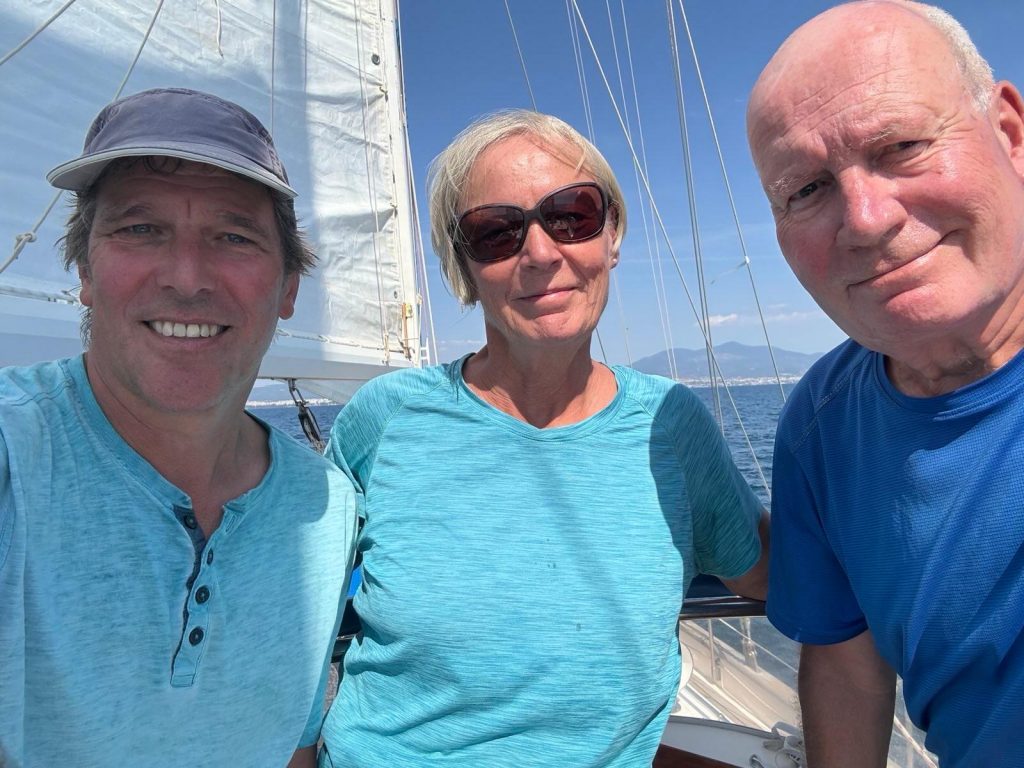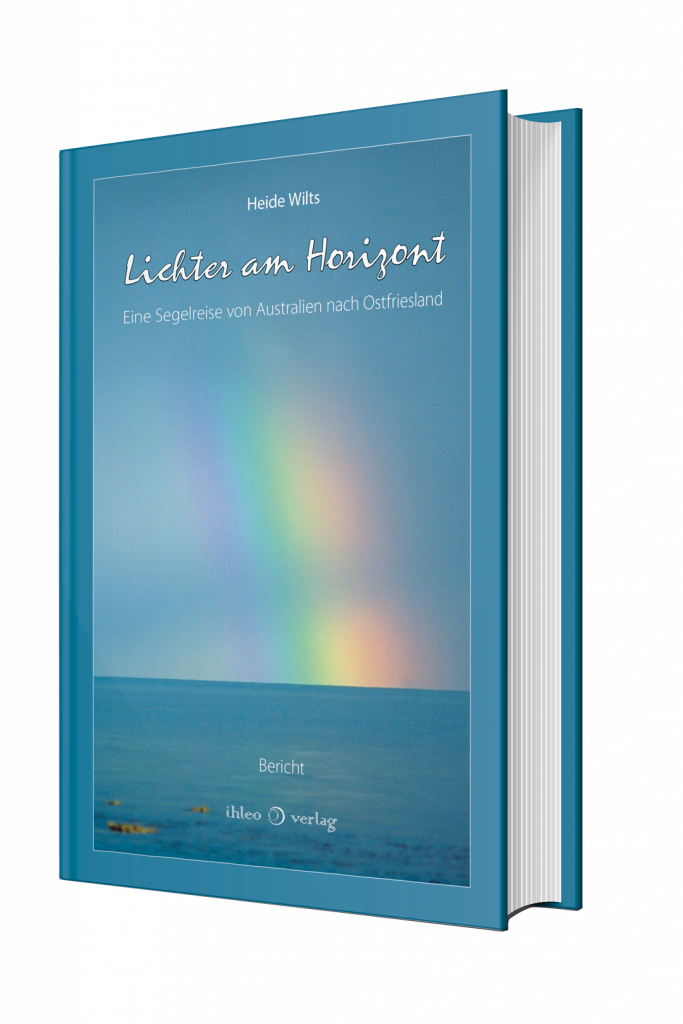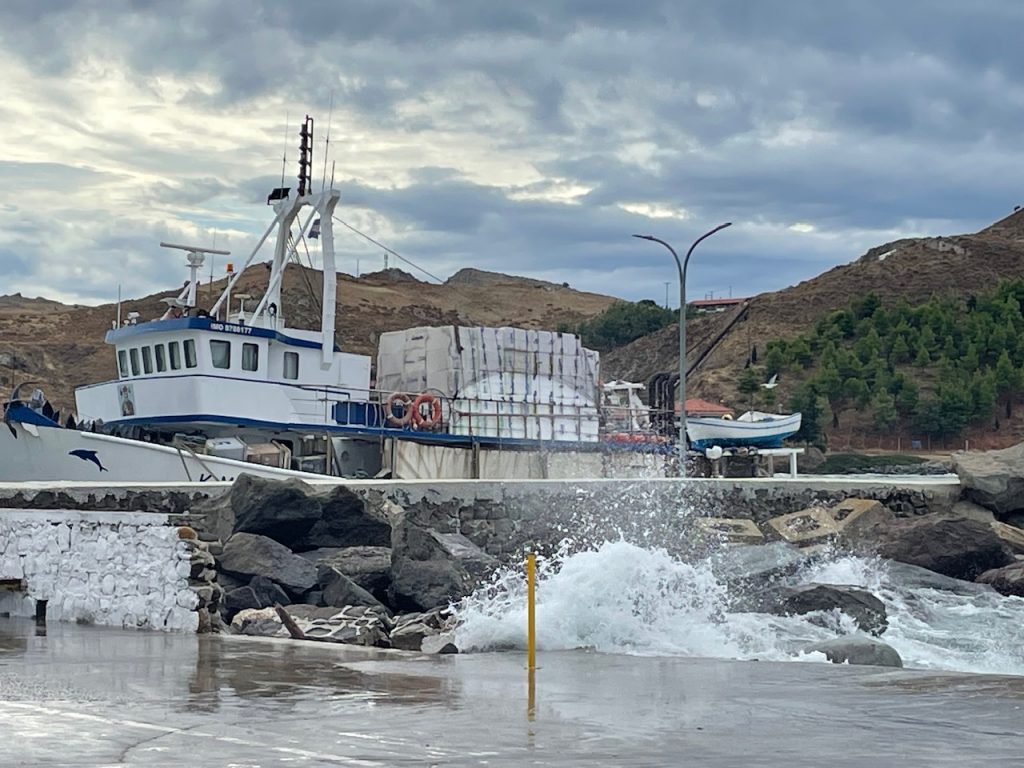
Despite little wind, we managed the 56 nautical miles to the island of Limnos well, thanks to our Nanni. We were underway from sunrise to sunset, twelve hours, with the impressive view of Mount Athos to our left for a long time. On the way, there was wind from the north-east and a strong current from the south, which led to chaotic waves.
In the harbour of Myrina, we were able to moor alongside, with a great view of the large fortress directly above the harbour. To make sure our visitors, who were arriving by ferry from Chios the next day, had enough space on board, we had to do a major reorganisation. A look at the weather apps showed us that we would probably have little opportunity to sail in the next few days, as very changeable weather with lots of wind and rain was forecast.
Elisabeth and Thomas spent eight days with us on board. We were only able to sail on one day. What a shame!
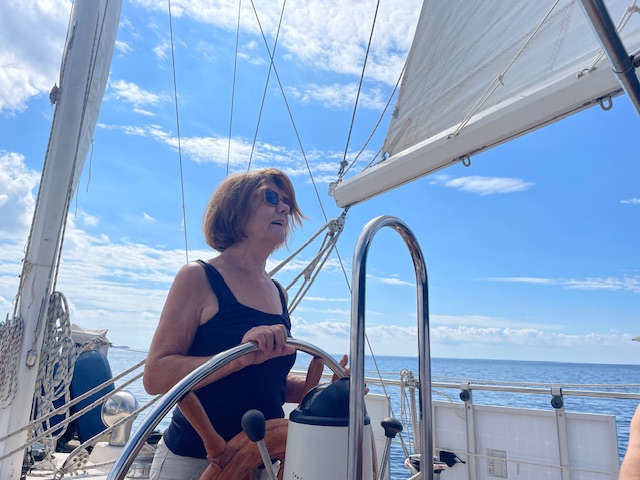
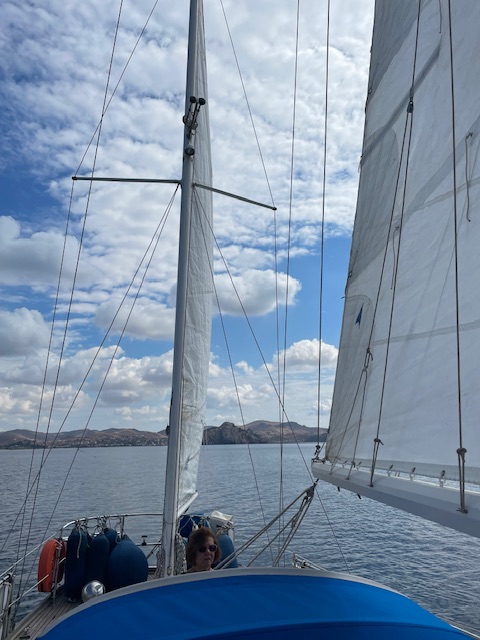
But luckily there is a lot to discover on Limnos. Myrina is a nice, cosy place in the off-season with good grocery stores and a fish shop.
Of course, we climbed the large Venetian castle. There, the strong wind whistled around our noses and we had great views.
We rented a car for a day and explored the island: the desert in the far north-west, the beautiful bays in the north where we could watch the surfers, the very traditional villages inland, and the bays on the south coast.
Pictures from the island tour
We were particularly impressed by the day hike through the barren and rocky landscape to the small cave church of Kakaviotissa, which is located high up in the mountains.
Pictures from the hike
When the sun came out and the wind wasn't quite so strong, we were able to go swimming at the beautiful city beach.
Yesterday, Elisabeth and Thomas left and we are back to being just the two of us. And once again, strong winds and rain are forecast, even more severe than in recent days. We would have liked to keep our berth alongside the pier. At first, the Port Authority told us that we could stay there, even though a cruise ship was coming and space was needed at the pier. But then yesterday we were asked to move to the pier in front of the promenade with a bow anchor. We would have liked to have known this earlier, because now we had to carry out this rather difficult manoeuvre with our long keel in the rain.
Now we are moored directly in front of the Limnos Hotel and the town hall, having had a restless night with lots of rain and wind. Early in the morning, we had to go on deck to put out a second spring line. The wind had changed direction and become even stronger. In the meantime, a swell had built up in the harbour. It was quite uncomfortable. All the boats are rocking back and forth, tugging at their anchor chains and lines. We stay with our boat and wait for things to calm down. And we are already looking forward to the next island: Samothraki, 40 nautical miles to the north.
Pictures of the strong wind
Incidentally, the cruise ship did arrive this morning and anchored outside the harbour for a while. However, the passengers, who were surely planning to take a tour around the island, were not brought ashore due to the strong wind and waves. Instead, we were able to watch a competition of the Hellas Rowing Team on the city beach. The athletes were not deterred by the strong waves.
